
The perfect landscaping can make a massive difference in how your home looks. It boosts curb appeal, and if you plan on selling your house, it can influence the property’s price.
If you don’t plan on selling your property any time soon, good landscaping can greatly impact your life. But how do you choose the ideal landscaping for your property?
We get you – there are many types of gardens and landscaping, and choosing can be intimidating and hard. If you don’t want to enlist the help of a garden designer, you have to consider a lot of stuff before you start work on your garden.
So, in this blog post, we have highlighted some great ideas for your garden that will make an impact.
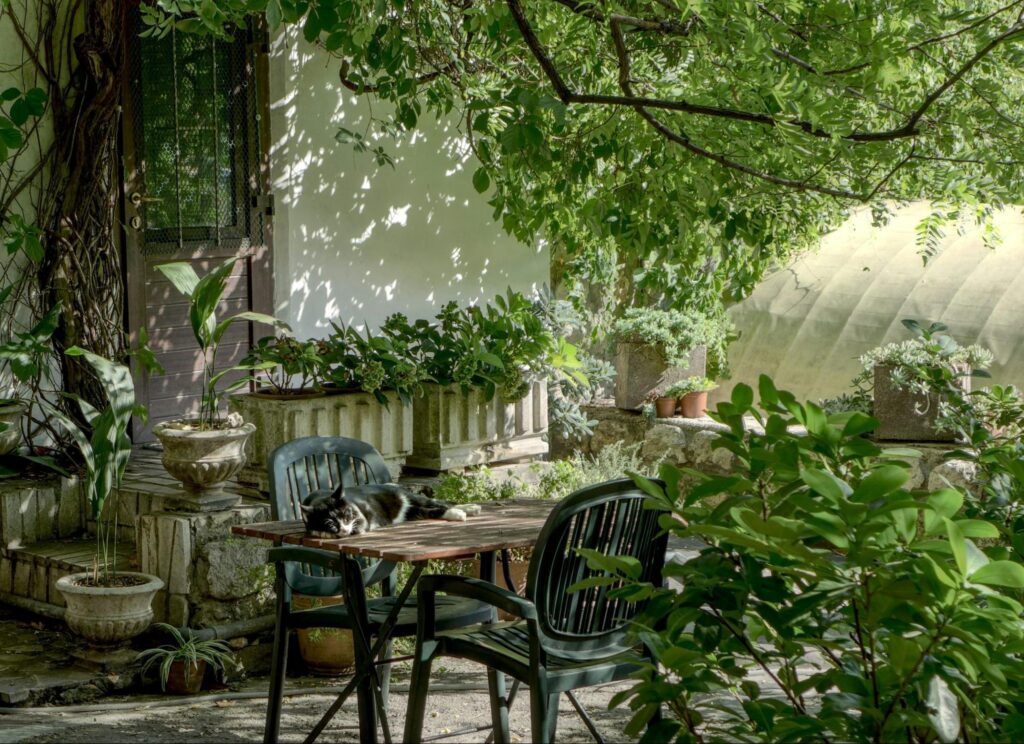
How to come up with a front garden design?
If your home has a front garden, the care and landscape design can hugely impact the property’s curb appeal.
An excellent front garden design complements the house itself. When considering the landscaping design, you should acknowledge things like the height of the house, the colour scheme, the style of the property, and the overall feel you want to achieve.
Front gardens are often small, so you don’t have enough space to let your imagination run wild. The ideal front garden design includes a right choice of surrounding plants and flowers. When planting, raised plant beds are not always a good choice. Instead, choose regular flower beds.
Make sure you choose a suitable variety of flowers and plants for your area. You can’t plant a palm tree in Ireland, right? Instead, select local plants – those will be easier to maintain.
Consider all other elements of the front of your home – is there a driveway? Is there a path leading to the house? Does the house have a front patio or not? All of these are essentially design elements and will impact the overall feel of the landscaping design.
If you want trees, consider their height, whether they should be evergreen or seasonal, and whether they require any special maintenance. Ensure the trees don’t hide your home from view but complement it. Most importantly, consider the shade they will make and how that will affect the lighting in the front of your home.
If you have a historical house, you should do research before you start landscaping. Historic homes often have landscaping design elements, like pathways and flower beds, that you can include.
Should you design your back garden?
Our answer to this question is… yes, yes, and yes! Back gardens can be lovely places to take a break from your everyday troubles. They can also express the person you are. You can do them the way you like them.
Back gardens can also increase the price of your home if you want to sell it. Many people searching for a new home want a place to relax– a garden or a balcony if it’s an apartment. So, taking care of your back garden can be a dealbreaker when negotiating a price for your property.
The ideal back garden landscaping design is focused on function rather than curb appeal. It should serve you and the purpose you want. Based on that, you can decide if it needs any lighting, garden furniture, additional plants, etc.
There’s a wide variety of garden designs to choose from, but most importantly, you should consider the function. If you want to relax, there should be a sitting area. If you want to look after fruits and vegetables, there should be enough space. If you want a thriving flower garden, you should consider the places of individual flower types.
The possibilities are endless, but they all come from the question: what purpose do I want the back garden to serve? In this blog post, you will read enough ideas to make that choice.
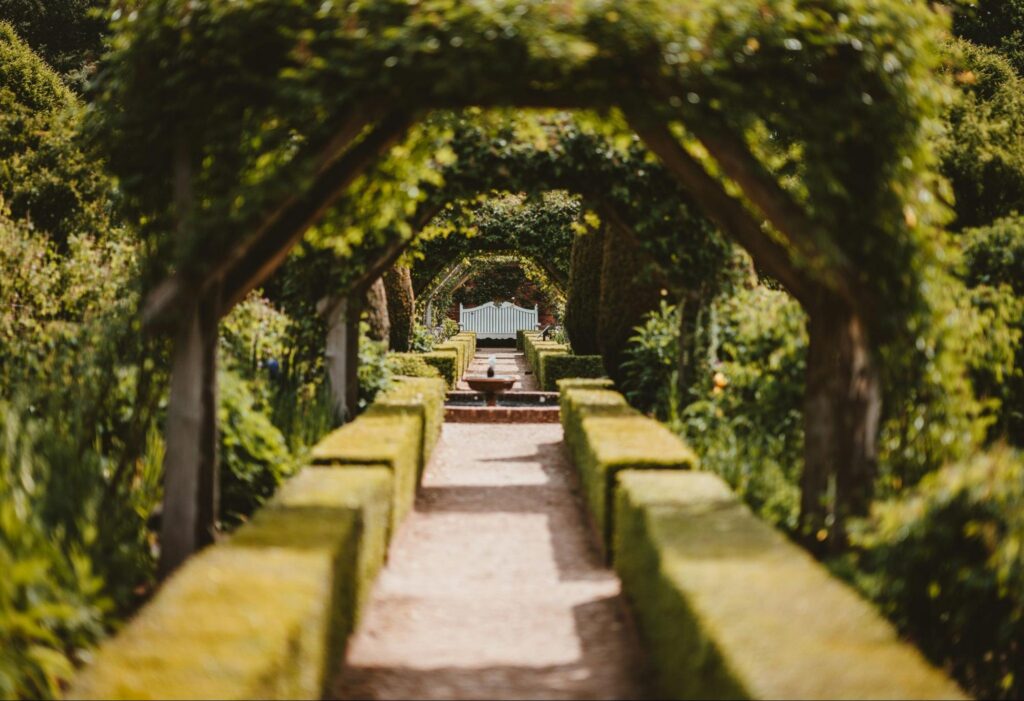
Elements to consider when first planning garden landscaping ideas
You need to pay attention to some key features when planning your garden remodelling.
In the list below, you will find some of them and why they are important:
- Size of the garden: The size of the space you’re working with can impact your choices. If you have a small garden, you can’t plant huge plants and trees in it. Size can also help you decide what to include in your garden and what style to choose.
- Terrain: The terrain of your property can automatically exclude some ideas you have for your garden. For example, you can’t put a pool in if your terrain is not even. If you decide to even it out, it will cost an immense sum of money.
The terrain you are working with will also impact the type of plants you choose.
- Soil type: This is important for the plants and trees you choose for your garden. We suggest using local flora because it will be easier to maintain. If you don’t want that, you can make raised flower and plant beds and incorporate any soil you want in them.
- Additional design elements: These can be virtually anything. You should consider existing pathways, driveways, garden beds, walls, plumbing, etc. Some elements you can keep, and some you can redesign or demolish altogether.
When planning to redesign your garden, you should take into account all of the above. Good planning can cut costs severely and make landscaping design easier.
Ideas that will make your garden stand out
If you’ve come this far and already have a plan for your garden space, then you might want some cool ideas for making your landscape stand out.
There are many ways to do that, but here are our favourite garden design ideas.
1. Focal point design
The focal point garden design is perfect for narrow and small gardens.
If you have a small garden space and your lot is narrow, consider adding a point of interest in the garden. Adding a cobblestone path or other pathway will visually elongate your garden and make it look like you have more space.
Your focal point can be anything – a fountain or a pond, a large tree or some kind of plant, a seating area or a gazebo, or a firepit. Whatever you choose, you should combine it with the overall style of your house.
Use plants to create a visual way for your eyes to navigate. For focal point design, you can use any existing shrubs and plants to guide your eyes to the most important part of your perfect garden. Of course, you can plant more, depending on your preference.
The focal point doesn’t have to be grand or expensive – you can easily achieve a huge impact with just a table and a few chairs placed in the right way. Also, you can achieve a focal point design with simple accessories. For example, if you already have a pathway leading to the far end of the garden, all you can do is hang some fairy lights to frame it, and that’s it! The light path will immediately guide the eyes towards the desired focal point.
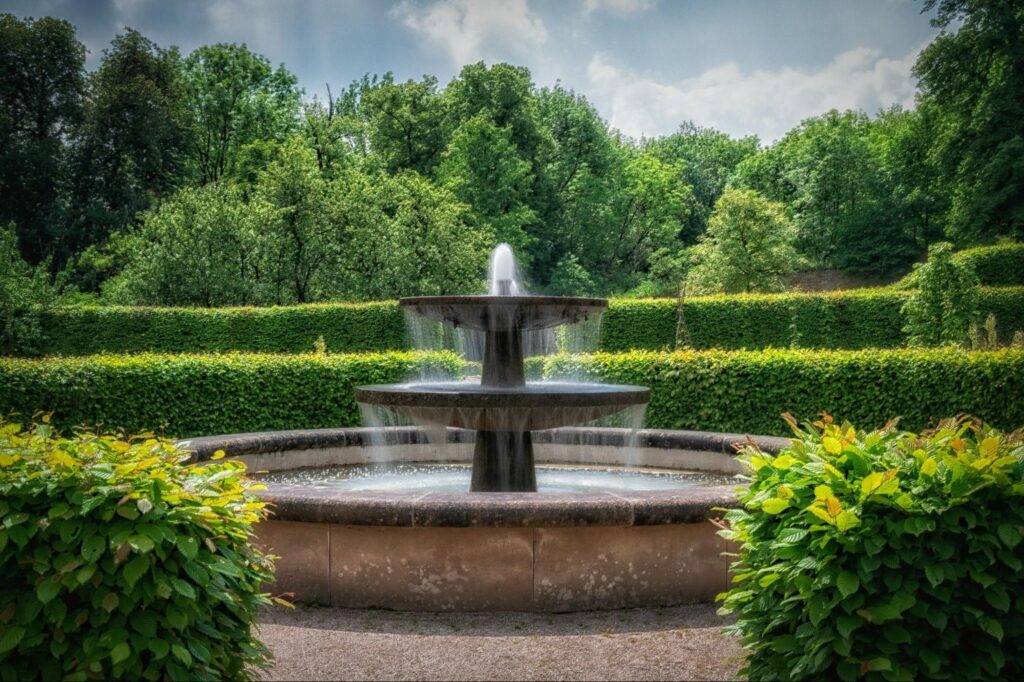
2. Meandering pathways
When designing your garden and wanting to keep it as natural as possible, remember one thing—nature doesn’t have straight lines. That’s why we love the so-called meandering pathways.
A meandering pathway is a garden path that winds around and doesn’t have a straight line. It is ideal for historical homes and homeowners who like to keep it as close to nature as possible.
Meandering pathways are a good choice for both small and large gardens. A small garden can benefit from a narrow path that gives access to different types of flowers and plants, while a large garden can be divided into different living spaces by a meandering pathway.
If you decide that this design choice is for you, you should consider the type of material you’ll use. For us, the best landscaping materials are either cobblestones, locally reclaimed York stone, or gravel. These materials are ideal for a low-maintenance garden but have a huge visual impact when used in the right way.
You can also design your meandering pathway by incorporating stone steps to give it a fairy-tale look.
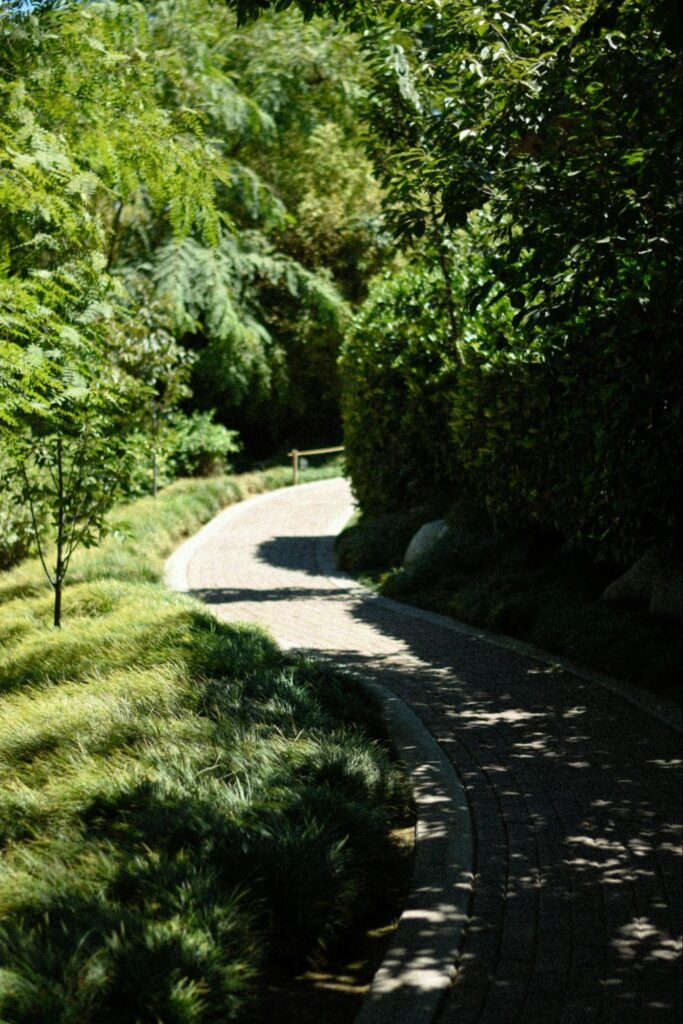
3. Water features
Water features are the preferred way for people to add accents to the garden. When designing your landscape, you should thoroughly consider where you want your water feature to be.
This is crucial because of the following:
- You must provide a water source for that place if it doesn’t have one.
- Check if you need planning permission to add a new water source to the property.
- You have to consider the whole landscaping and how it affects the water feature.
- Water features can’t be placed on all types of terrain and soil.
Once you have chosen the place of the water feature, you can select the type. Depending on the size and style of your garden and home, you can select between fountains, ponds, small waterfall features with stones, etc.
Water features can give huge visual interest even to the smallest of gardens. Also, the sound of water is proven to be a very relaxing sound to people.
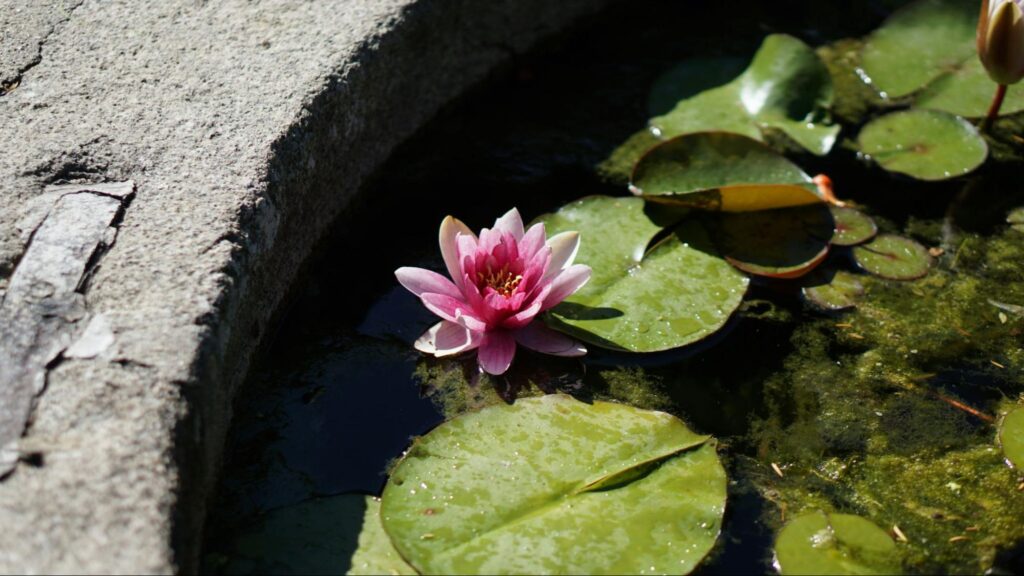
4. Outdoor seating
Some people consider their outdoor space as another part of their home. If you live in a place where you can spend time outside all year round, you can decide to do a garden landscape based solely on function.
Your garden can serve as an entertaining area, a bonus kitchen, a seating and dining area, or a home movie area—the possibilities for your outdoor rooms are endless.
When thinking about what type of outdoor seating to choose, you should first select the function of the garden space. If you want a place to relax after a long day at work, you can choose lounge chairs. If you want an outdoor dining area, you can choose a dining table with complementing seating.
And there’s one thing you need to remember—being outside doesn’t mean you have to compromise on style and comfort. You can choose whatever furniture you like the most, but you have to make sure it is designed for the outdoor area. You should also provide outdoor lighting to make the spaces even more functional.
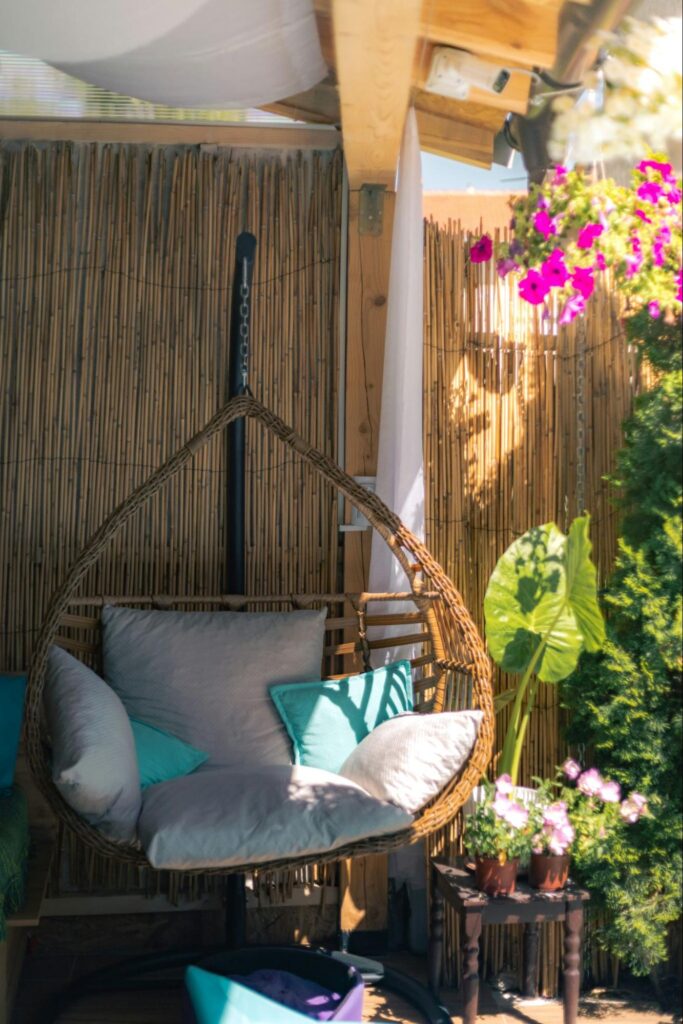
5. Kitchen garden
Kitchen gardens are our favourite ones! In a kitchen garden, you can grow herbs, vegetables and fruit. This garden can give back to you, but you have to remember – growing food is not easy. Kitchen gardens are also ideal for experiments like organic gardening.
For a kitchen garden, it’s best to use raised plant beds. That way, you can add the necessary soil for each individual plant you want to grow.
Raised beds are also very convenient when separating plants from one another. You can have a vegetable plot and a herb plot right next to each other without risking the two of them mixing. Raised beds give you almost complete control of the soil quality because you can use whatever soil is necessary for your plants to make them strong and yummy.
If you have a small garden or live in an apartment, don’t worry – you can still have a perfect kitchen garden. For small spaces, consider different pot sizes. You can add window boxes or hanging baskets to your home to grow your favourite and most used herbs. That way, you can pick whatever herb you need without leaving your kitchen.
Another important thing for your kitchen garden is to consider the sun the different plants needed. Some vegetables require a sunny spot, others a shady backyard, and the third kind prefers partial sun. Based on that, you will decide where to place your raised beds.
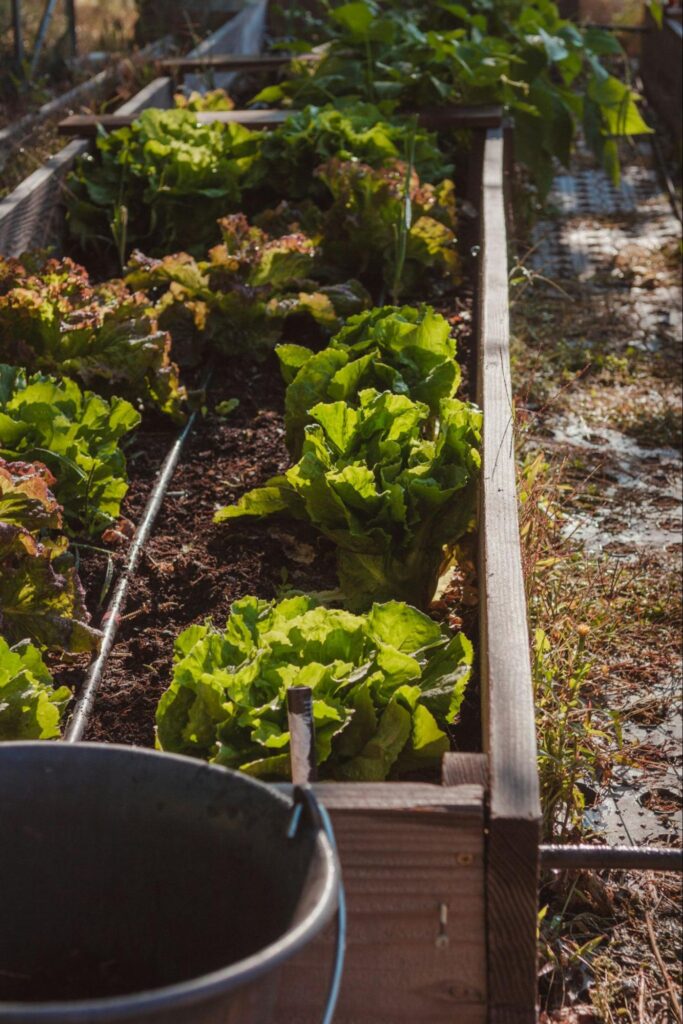
6. Rock gardens
A rock garden is one of the easiest landscape designs. It is really easy to maintain, and you almost don’t need a green thumb to care for it.
Rock gardens are perfect for front gardens and small spaces. With the use of different types of rocks and stones, you can create visual focal points around your property. You can use stone mulch to plant your preferred types of plants.
Choose plants that are not high maintenance, like cactuses, succulents, and small shrubs. Mediterranean shrubs surrounding rock gardens are especially ideal because they are low-maintenance.
Rock gardens are ideal in places that require drought-tolerant planting. Having a rock garden doesn’t mean you have to sacrifice the beauty of plants – loads of plants and fragrant flowers thrive in hot and dry places. You just have to do very good research on what to choose.
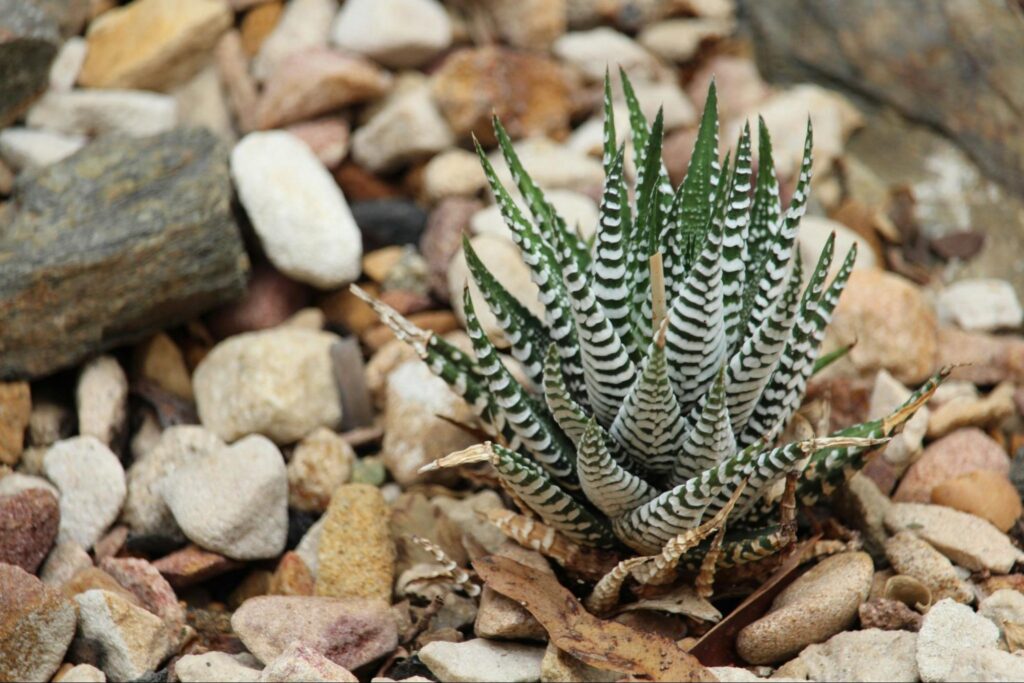
7. Japanese Zen garden
Japanese tradition has a long history of garden design. In contemporary garden design, zen gardens have risen in popularity, with more and more people looking for peace of mind at home.
If you want to create a Japanese-style zen garden, you must know that this type of landscaping has some key features that you don’t want to miss.
First, the use of sand. Japanese landscapers use sand to guide the eyes through the garden. Sand pits and pathways give meaning to the space and are often used as the main focal point in Japanese gardens.
Second, a water feature is almost a must. In Japanese tradition, it’s important to be very close to nature. Incorporating a fountain or a koi fish pond in your garden can be a huge focal element.
Japanese zen gardens are well-maintained and frequently looked after, so they are not ideal for low-maintenance homeowners.
Plants shouldn’t be big. Instead, consider the flow of the eye while watching the garden. Different types of mosses and trailing plants can add interest to the design.
The zen garden is meant as a place for peace and contemplation, so you should keep that in mind when designing it. You can also include a small seating area, but keep in the Japanese style—choose low sofas or chairs, preferably in a very minimal and nature-oriented design.
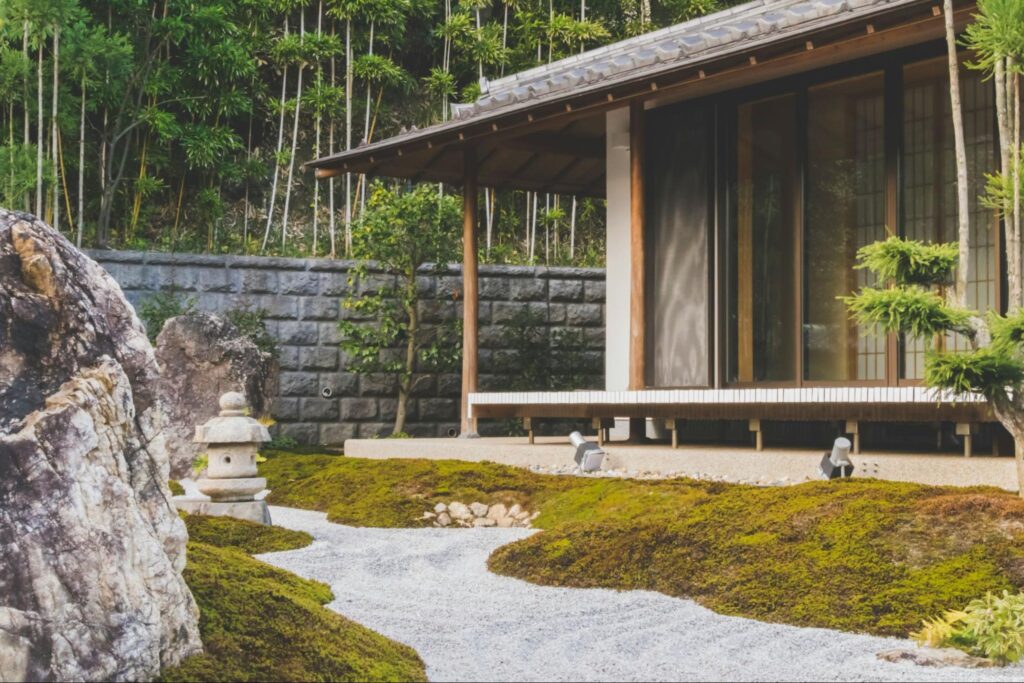
8. Fire pit or fireplace
Fire pits and fireplaces are the main ways people add visual interest and meaning to their back gardens. With them, you can design a very cosy chill-out spot at your home, and the best thing is you can use it almost all year.
Depending on your design and preference, you can choose between a raised fire pit or one that’s in the ground. You can put the sitting area around the fire pit to make it even more special.
Fireplaces are more of a classic choice for gardens. The good thing is that you can orient your seating space just as you would in a formal living room. You can even choose a sofa for outdoor living to make it cosier.
Pro tip: If you have a fireplace in your garden, be sure to add a pizza oven. We promise that you will never regret that choice.
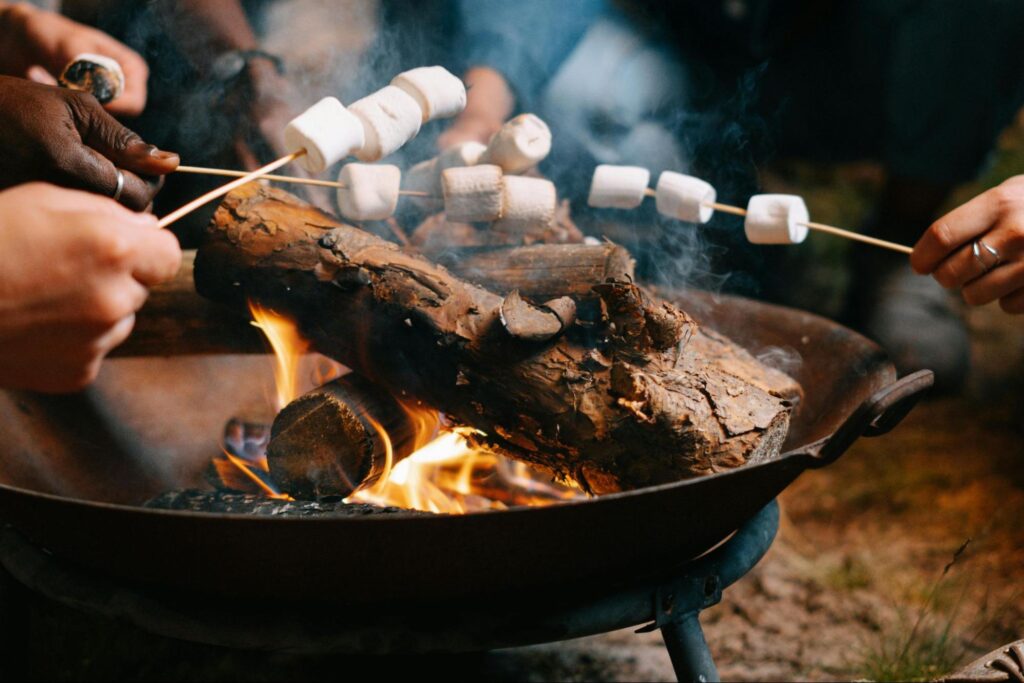
9. Garden lighting
Garden lighting is crucial for the overall feel of your design.
Lightning can be used for focal points, pathways, and living areas in your garden. If you want to go more minimal, the best idea is to add some fairy lights to the space you want to light. You can also use different types of lanterns—both electrical and with fire—for your outdoor space.
If you want a more classic feel, you can add electrical cables in the soil and incorporate lighting with different types of lamps and light poles. If you decide on this option, check with your local authorities if you need any permits to run electrical cables on your property.
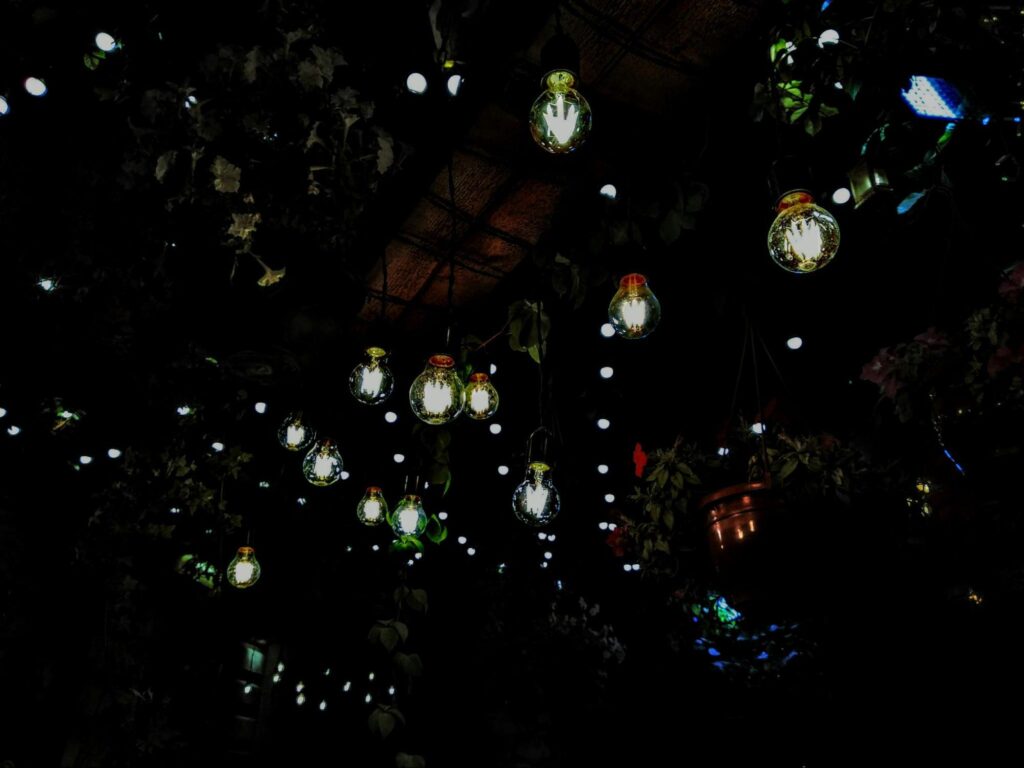
10. Hardscape elements
Hardscape elements are also really preferred by homeowners. If you don’t know what this is – a hardscape element is a durable construction or object which shapes and retains the surrounding landscaping.
Adding hard landscaping elements to your design can be costly, but in the long run, they will save you money because they are durable.
For instance, a challenging landscaping element is the driveway to your home. You can choose from a wide variety of stones and slabs to make that garden area appealing. To implement hardscape elements, consider the help of garden designers. They will give you excellent tips depending on your individual case.
Hardscape elements are also a retaining wall or garden fencing. The retaining walls are there for a purpose and can’t be moved. That doesn’t mean they have to be ugly. You can use all sorts of stones and bricks to make it look better and plant trailing plants along the wall. In time, the climbing plants will make a living wall.
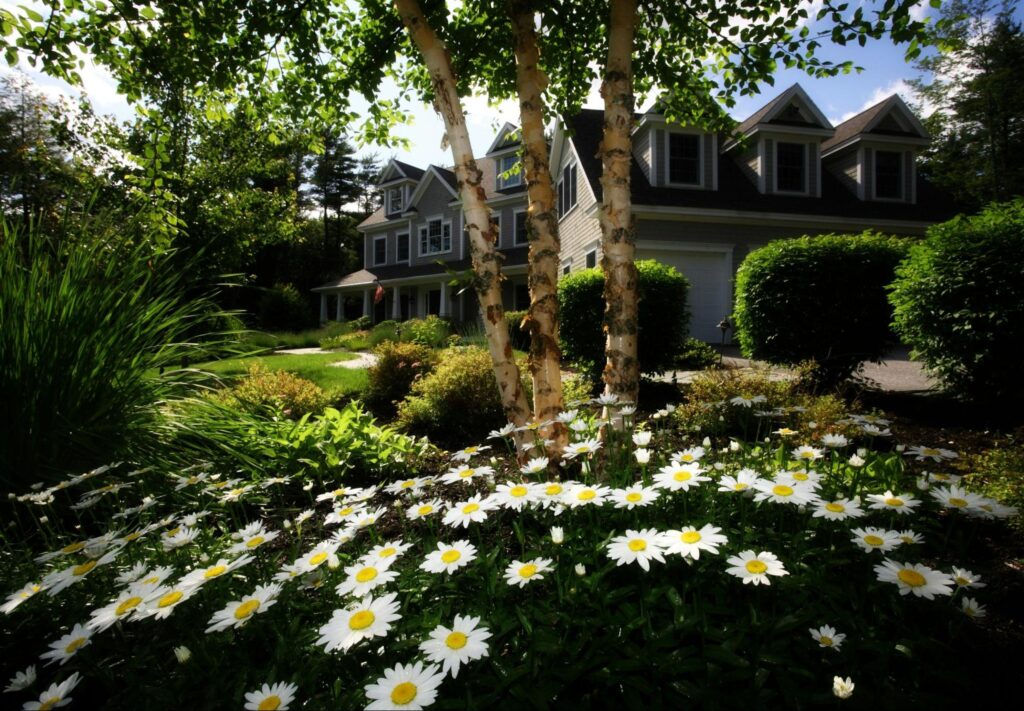
11. Color schemes
If you plan on growing many plants in your garden, and we assume you will, you should consider the best colour scheme.
When choosing flowering plants, we need to consider how they complement the surrounding landscape and the design of the house.
Choosing a rich palette for your front garden, for instance, can immediately make your house look more expensive and newer than it is. The right colours can make design elements stand out.
The same goes for your back garden. When you devise your colour scheme, think about how it will look on the lot. You can use colours instead of pathways to guide the eyes to a certain point in the garden.
Conclusion
Garden landscaping is a huge undertaking if you do it alone.
The most important thing is to devise a plan for what you want. Consider involving a professional landscaper in the process, as there may be elements you can overlook.
The perfect landscaping can add huge curb appeal to your home. You have absolute freedom to design your paradise.
Frequently Asked Questions
Can I DIY landscaping?
It depends on what you want for your garden. Most ideas we have given here are manageable for DIY people. You just have to prepare in advance for the task.
I can’t care for plants, but I want a garden. What should I do?
There’s a style of gardening called “wild gardening.” This means your garden looks as it would in nature. The only thing you need to do is give it an occasional cut here and there. Also, many companies offer garden care as a service.
I live in an apartment – what can I do to have a small garden?
Many people don’t have outdoor spaces or beautiful gardens where they live. But adding window boxes or making a small garden on your balcony can have a huge impact on your home, so don’t give up on hope—just think creatively!

